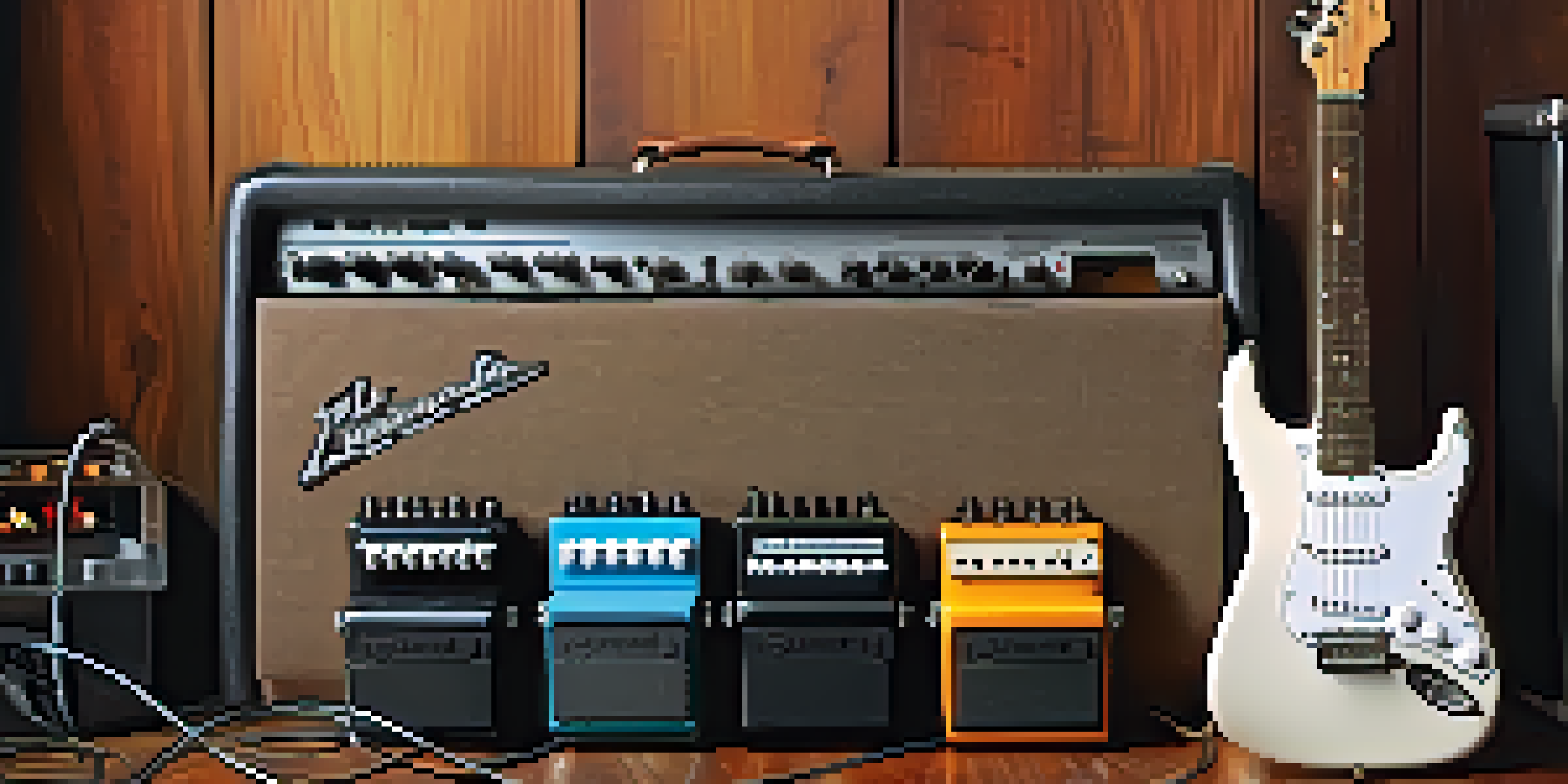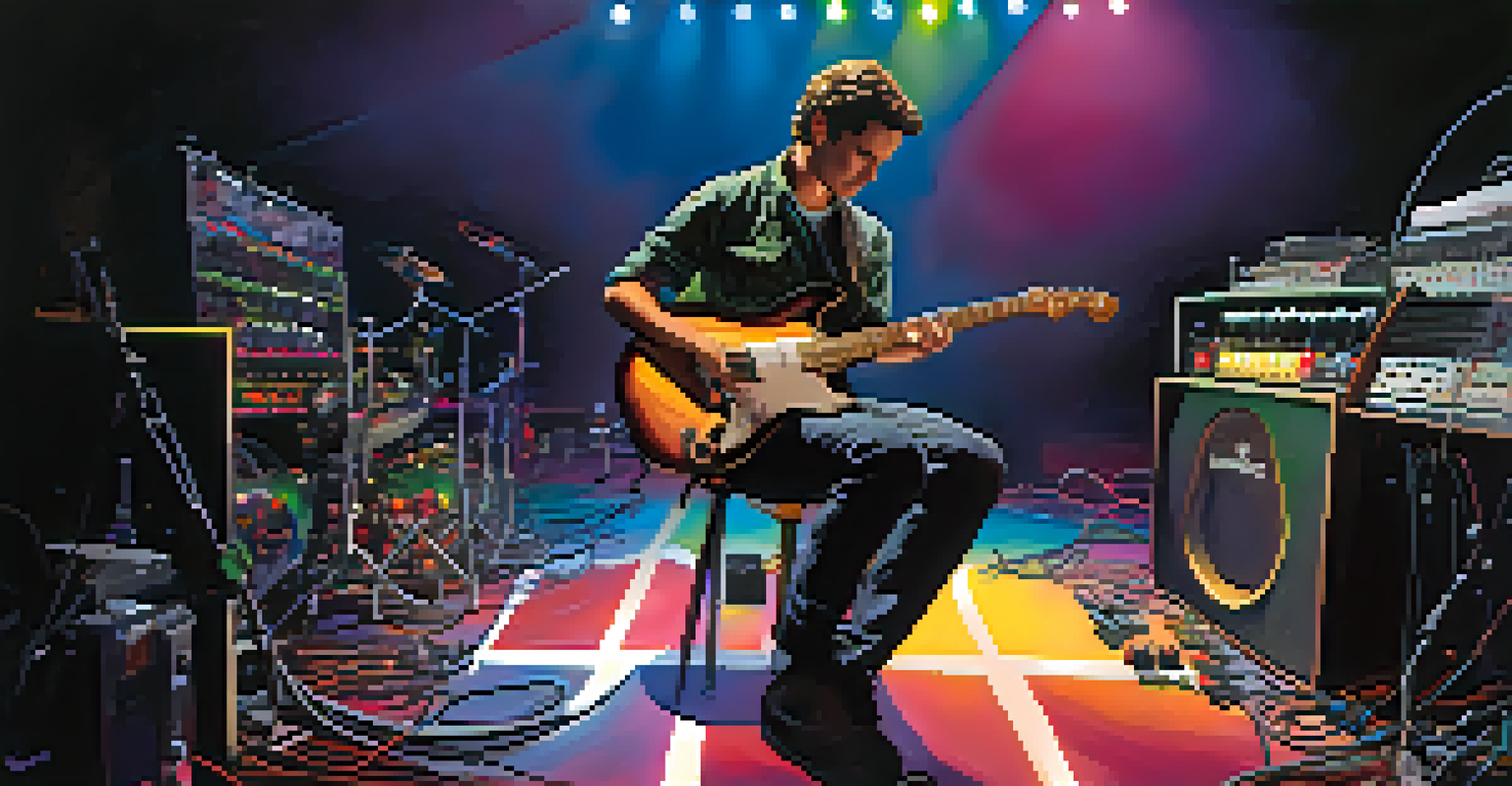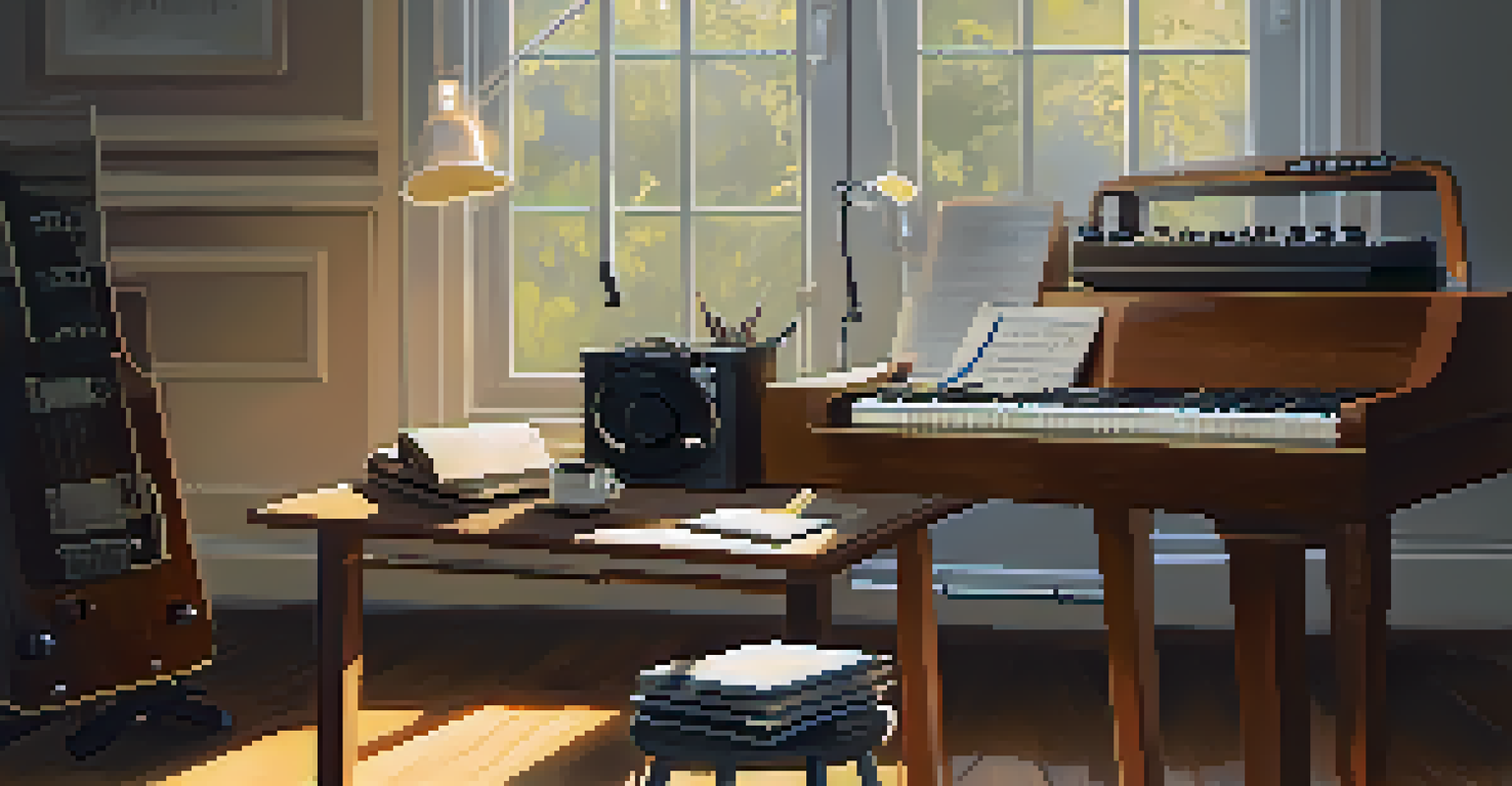Guitar Effects Chain: Arrangement for Optimal Sound

Understanding the Basics of Effects Chains
An effects chain refers to the order in which guitar pedals are connected. This arrangement can drastically alter your sound, making it a vital aspect of any guitarist's setup. Think of it like a recipe; the order of ingredients can change the dish's flavor.
The only way to make sense out of change is to plunge into it, move with it, and join the dance.
Different types of effects can be categorized into groups such as dynamics, modulation, and time-based effects. Each group serves a unique purpose, whether it's to shape your tone, add depth, or create echoes. Understanding these categories helps you decide how to arrange them for the best sound.
Ultimately, the arrangement of your effects chain can enhance your musical expression. By experimenting with different configurations, you may stumble upon a sound that truly resonates with your style. This exploration is part of the fun of playing the guitar.
The Importance of Signal Flow
Signal flow is the path that your sound travels through your effects chain. It typically starts from your guitar, moves through the pedals, and ends at your amplifier. Understanding this flow is crucial for achieving a clean and powerful sound.

When arranging your pedals, consider how each effect interacts with the signal. For instance, distortion pedals generally perform best when placed before modulation effects, as this allows the distortion to shape the overall tone. This principle can help you avoid muddiness in your sound.
Order of Effects Influences Sound
The arrangement of guitar pedals in an effects chain can drastically alter your overall tone and sound.
Keeping signal flow in mind will also help you troubleshoot issues. If your sound isn't quite right, check the order of your pedals and make adjustments. A small change can often make a big difference in your tone.
Common Effects and Their Ideal Placement
Different effects serve various purposes, and knowing where each fits best is key to an optimal sound. For example, overdrive and distortion pedals usually go at the beginning of the chain. Placing them first allows them to shape your guitar's tone before any modulation effects come into play.
Creativity is intelligence having fun.
Modulation effects like chorus and flanger are often placed after distortion. This way, they can add depth and texture to the already distorted signal, creating a richer sound. Meanwhile, time-based effects like reverb and delay are typically best positioned at the end of the chain, giving your sound a sense of space.
By following these common practices, you can achieve a more polished sound that highlights the strengths of each effect. However, remember that these are guidelines, not hard rules—experimenting with placements can yield exciting results.
Using Loopers and Switchers for Flexibility
Loopers and switchers can greatly enhance your effects chain by providing more control over your sound. A looper allows you to record and layer your playing, while a switcher lets you activate or deactivate multiple pedals with a single switch. This flexibility can be a game-changer for live performances.
By using a looper, you can create complex soundscapes and practice improvisation over your own backing tracks. It’s like having a full band at your fingertips, allowing for creativity and spontaneity. Similarly, switchers help you transition between different sounds effortlessly during a gig.
Signal Flow is Key to Clarity
Understanding how sound travels through your effects chain helps achieve a clean and powerful sound.
Incorporating these tools into your setup not only enhances your sound but also allows for greater artistic expression. They can help you focus on playing rather than fiddling with individual pedals, making your performance smoother and more enjoyable.
Experimenting with Pedal Order for Unique Sounds
One of the most exciting aspects of using effects pedals is the ability to experiment with their order. By rearranging your effects chain, you can discover unique sound combinations that can redefine your playing style. It's like painting with sound—each variation can create something entirely new.
For example, if you place a delay pedal before a distortion pedal, you can achieve a completely different texture than the conventional order. This unconventional approach can add depth and complexity to your sound, making it stand out. Don't hesitate to try wild combinations; you might strike gold.
Ultimately, experimentation leads to personal discovery in your music. Embrace the trial-and-error process; it’s where creativity thrives, and your signature sound can emerge.
Maintaining Your Effects Pedals
Keeping your pedals in top condition is essential for maintaining optimal sound quality. Regularly check connections, clean the pedals, and replace batteries or power supplies when needed. A well-maintained setup can prevent unwanted noise and ensure reliability during performances.
It's also wise to periodically review your effects chain. As you grow as a guitarist, your preferences may change. You might find that some pedals no longer serve your sound, while others could be worth revisiting. This reflection helps you stay aligned with your evolving musical identity.
Experimentation Leads to Discovery
Rearranging your effects can yield unique sounds and enhance your personal musical expression.
Remember, a clean and organized setup not only sounds better but also makes it easier to navigate during a performance. Taking the time to care for your gear is an investment in your music.
Final Thoughts on Crafting Your Effects Chain
In conclusion, arranging your guitar effects chain can significantly impact your sound. By understanding the basics of signal flow, experimenting with pedal order, and maintaining your gear, you can unlock new creative possibilities. Each guitarist has a unique journey, and your effects chain is a vital part of that story.
Take the time to explore different arrangements and find what resonates with you. The joy of playing guitar often lies in discovery, so allow yourself the freedom to experiment. Remember, every great guitarist has spent time perfecting their sound.

Ultimately, the goal is to create a sound that feels authentic to you. Embrace the process, have fun with your effects, and don’t be afraid to stand out. Your effects chain is a reflection of your musical personality—let it shine!